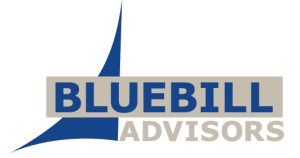FormRouter, Inc. announced new subscription pricing for its LiveCycle Reader Extensions Service for organizations seeking to deploy PDF forms with advanced usage rights such as digital signatures and ability to fill and save offline. LiveCycle Reader Extensions allows organizations to enable advanced forms-processing features within Adobe Reader. When a rights-enabled PDF document is opened in Adobe Reader, users can access advanced features such as 2D barcodes, digital signatures, and offline save. Once the document is submitted or closed, these special rights are disabled until the user receives another rights-enabled PDF file. The FormRouter subscription service allows individuals with no technical experience to convert existing PDF documents into secure, Internet hosted forms, with no programming and no hardware installation. As PDF forms are submitted, encrypted results are routed directly to the form owner’s desktop. Documents that require extended-rights can be enabled by FormRouter and deployed using the FormRouter service and/or Adobe’s LiveCycle server solutions. Encrypted form submissions may be loaded directly into Microsoft Access, SQL Server or any ODBC compliant database. Integrated alerts support e-mail notification, payment processing through VeriSign and Authorize.Net and CRM integration with salesforce.com.
Page 449 of 935
Arbortext announced that Australia-based Allette Systems will become a new systems integration specialist for Arbortext products. Allette Systems will provide sales, professional services and technical support for Arbortext publishing applications. , http://www.arbortext.com
Stylus Studio announced the release of Stylus Studio 6 XML Enterprise Edition, the newest edition of the Stylus Studio XML IDE. Stylus Studio 6 XML Enterprise Edition is a tool for advanced XML data integration projects. Now you can generate code for your XQuery and XSLT stylesheets and deploy that code to a live production server or application. Stylus Studio captures the settings specified in the XQuery and XSLT scenarios – your choice of XML processor, parameters, input/output files, and post processing options, for example – and reflects them in the generated Java code. Push-button code generation also gives you complete control over class names and whether or not generated classes are public. Stylus Studio fully supports the W3C XQuery working draft of April 2005. New XML Schema Tools include EDI/EDIFACT to XML Schema conversion; the ability to generate sample XML fragments from XML Schema components, Java API for XML Binding (JAXB) code from XML Schema, create XML Schema documentation with a JavaDoc-like layout, and XML Schema-based output validation of XSLT or XQuery transformations. Stylus Studio 6 XML Enterprise Edition, Release 3 is available for immediate purchase at the Stylus Studio online shop starting at $995 (USD) for a single user license, with volume discounts available. For a limited time, customers who purchased Stylus Studio 6 XML Professional Edition on or before June 1, 2005 are eligible for a free upgrade to Stylus Studio 6 XML Enterprise Edition. http://www.stylusstudio.com, http://www.datadirect.com
McLaren Software announced the immediate availability of its Enterprise Engineer 3.1 release for the FileNet P8 platform. Enterprise Engineer 3.1 includes a number of new features to improve the user experience and provide advanced workflow capabilities for managing the engineering business process. Major features added in Enterprise Engineer 3.1 include: an Explorer Client that allows users to search, browse and manage engineering information from their Windows desktop; Workpacks that allow users to package information and send it through workflows; and a batch import tool that allows engineering information to be stored in the FileNet P8 repository without loosing the relationships with other referenced content. McLaren is also releasing Enterprise Engineer Review, a component of Enterprise Engineer, that will allow users to redline and mark-up engineering information and then store these change requests in FileNet’s P8 repository. http://www.mclarensoftware.com
Saba introduced Saba Content Management, a learning content management system (LCMS) designed for enterprise-wide content development and delivery. Built on Saba’s new services-oriented architecture, Saba Content Management helps organizations solve their most critical learning content management issues. Saba Content Management enables content development and delivery across the extended enterprise, supports multiple authoring tools, and provides deep integration into Saba Enterprise 2005, the company’s HCM platform. Saba Content Management helps organizations capture, manage and reuse content developed and stored in the many silos across an organization. Saba Content Management is architected as an enterprise-wide asset, so customers can scale their use with limited risk of system overload. Additionally, Content Contributor Interface provides unique tools to extend the content development process to any user regardless of technical abilities. Saba has adopted an approach to authoring based on integration with third-party authoring tools, enabling users to transform stand-alone authoring tools into full-fledged LCMS systems. Saba Content Management allows authors to continue using the tools they know. Saba Content Management is available today. http://www.saba.com
Interwoven, Inc. (Nasdaq: IWOV), provider of Enterprise Content Management (ECM) solutions for business, and Brandbank, the U.K.’s premier supplier of product images and data to the retail e-commerce community, announced a partnership in which Brandbank will provide Interwoven’s Digital Asset Management (DAM) solution as a hosted offering to its over 900 retail clients. As a result, Brandbank is the first European ASP for Interwoven’s DAM solution, which is powered by Interwoven MediaBin Assert Server software. By offering Interwoven’s DAM solution via an ASP model, Brandbank can provide its clients with a “try before you buy” DAM environment that combines flexibility and scalability with a low cost of entry. The Brandbank hosted DAM solution based on Interwoven technology is now available. , http://www.brandbank.com
Workshare introduced integration between Workshare Professional 4.0 and Microsoft’s SharePoint Products and Technologies for single master tracking and enabling the secure sharing of documents inside and outside of the perimeter. Microsoft Windows SharePoint Services and Microsoft Office SharePoint Portal Server 2003 enable users to create, manage and build their own collaborative workspaces and make them available throughout and beyond the organization. However, this additional channel of document distribution adds to the growing risks around document security, accuracy and compliance. Workshare Professional 4’s SharePoint Integration Option can ensure users are working off the correct master document, eliminating the errors and confusion resulting from multiple “masters” residing in multiple repositories. In addition, Workshare Professional 4’s SharePoint Integration Option enables secure document exchange inside and outside of the perimeter by enforcing document security policies, removing potentially damaging confidential information and providing an always-on audit of important document processes and events. The Workshare Professional 4 SharePoint Integration Option is available immediately. For current Workshare Professional 4 users, it is US $50 per seat for a perpetual license with volume discounts. http://www.workshare.com
ebrary announced that it has launched a new version of the ebrary Reader, its free software application that turns static PDF files into research-ready documents that can be cross-referenced and searched online. The ebrary Reader features more functionality to make the research experience richer and more productive including customizable bibliographical citation formats and refined InfoTools search. The new Reader also now supports both Firefox and Mozilla Web browsers in addition to Microsoft Internet Explorer and Netscape Communicator. The ebrary Reader is a key component of the ebrary Dynamic Content Platform (DCP) which combines technology with a growing repository of more than 60,000 full-text books and other authoritative documents from more than 200 leading academic, STM, and professional publishers. The ebrary Reader enables PDF documents to be delivered to a user’s desktop one page at a time, eliminating the need for document downloads. It also gives PDF documents word level interaction through InfoTools. Simply by selecting a word or phrase then activating the InfoTools menu, a user can instantly link out to additional resources in ebrary’s repository, the library, or on the Web. http://www.ebrary.com

